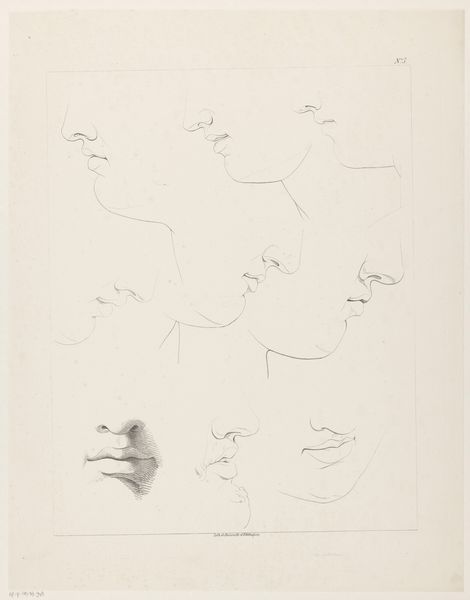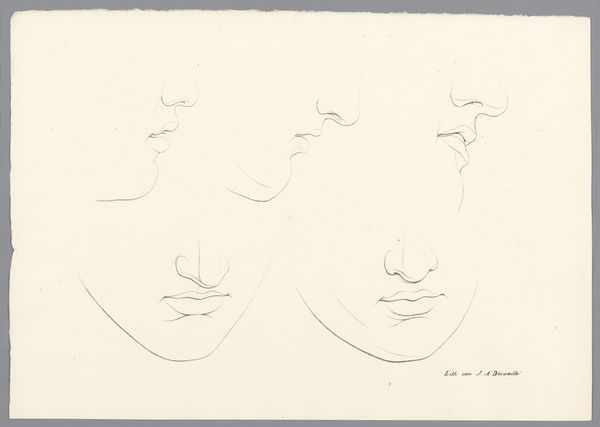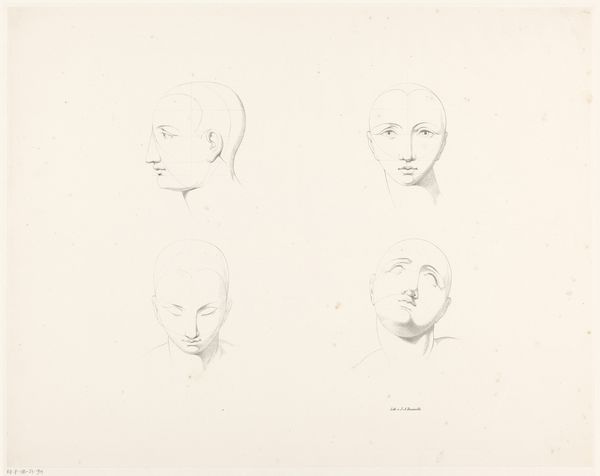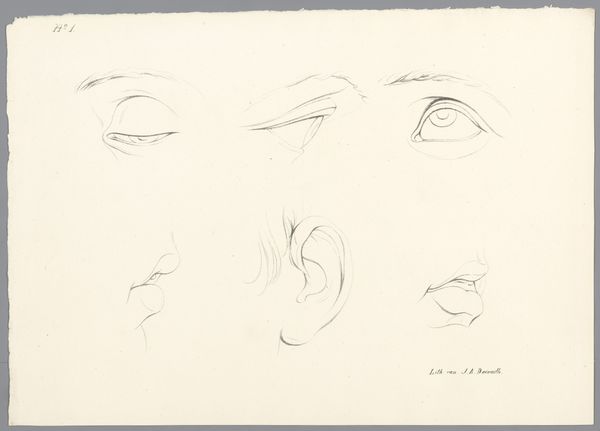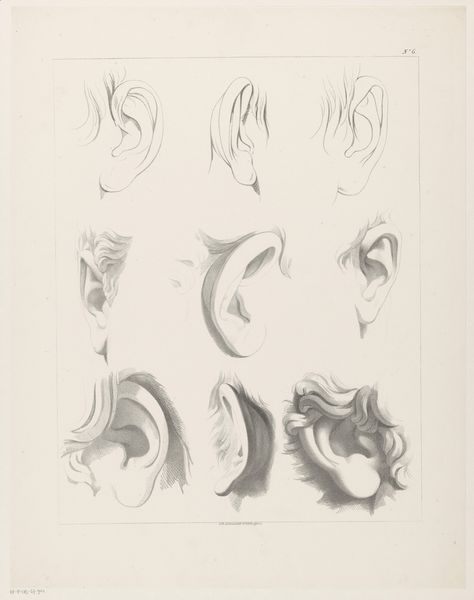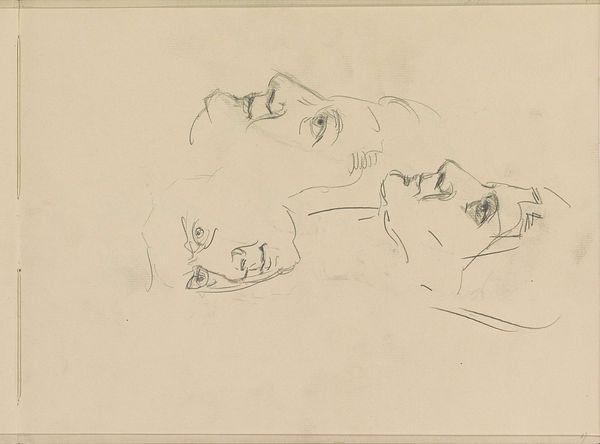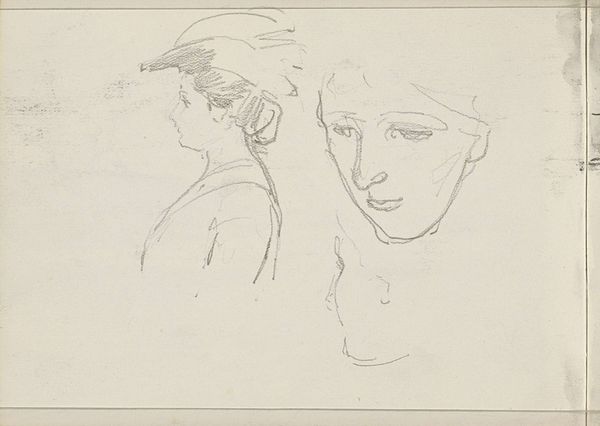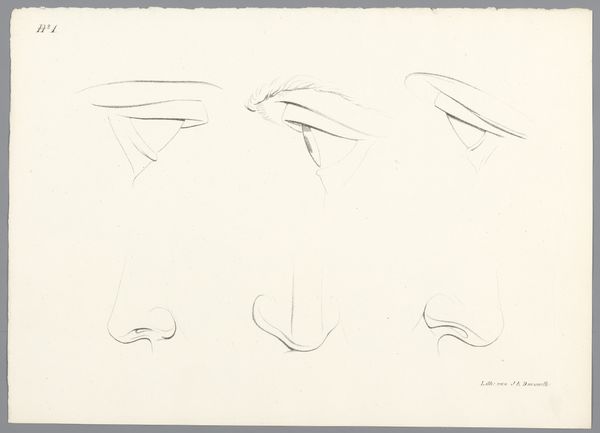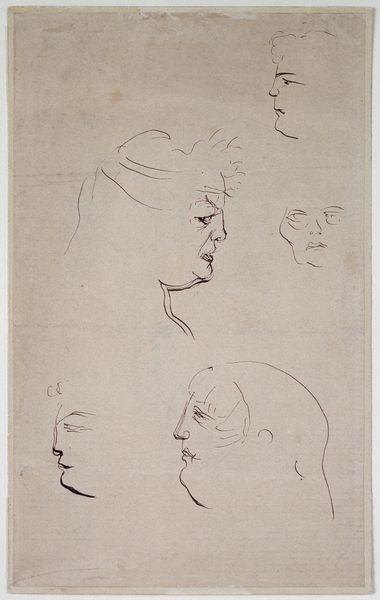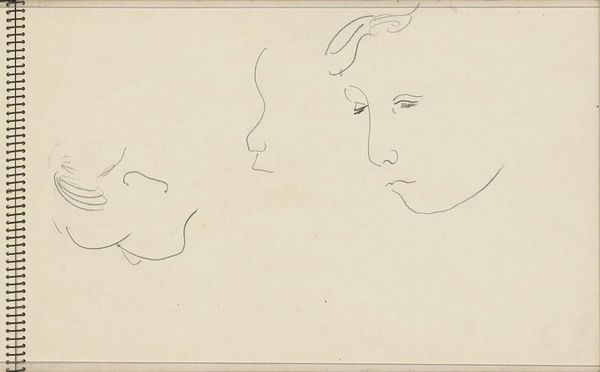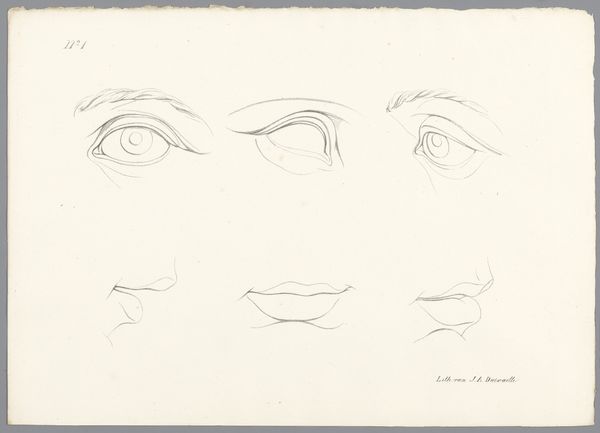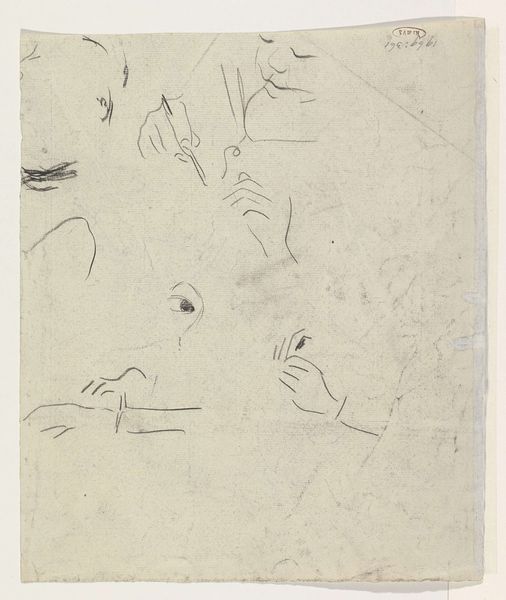
drawing, pencil
#
portrait
#
drawing
#
neoclacissism
#
pencil sketch
#
etching
#
pencil
#
pencil work
#
academic-art
#
profile
Dimensions: height 545 mm, width 425 mm
Copyright: Rijks Museum: Open Domain
Editor: So this drawing, "Vier gezichten van opzij" from around 1820-1833 by Jean Augustin Daiwaille, depicts four faces in profile, rendered in pencil. They give off such a formal, classical vibe. What cultural echoes do you hear when you look at these faces? Curator: The resonance is deeply embedded in Neoclassical ideals. Notice how the profiles recall ancient Roman busts. The artist employs line and form to evoke a sense of idealized beauty and intellectual rigor. What emotions or characteristics might these stark profiles have suggested to viewers at the time? Editor: Maybe seriousness, intelligence, a return to simpler, more austere times? All qualities associated with the classical world I suppose? Curator: Exactly! These faces weren’t just portraits, but embodiments of moral and aesthetic values. Consider the social and political context, the rise of nationalism, and the desire for order after the French Revolution. The symbols employed reference cultural memory and societal aspirations. Do you notice anything in their features that gives you a better idea of their cultural identity? Editor: It's more their idealized forms that read classical to me. Their plainness seems deliberate, stripped of individuality to emphasize universal virtues instead. Curator: Indeed, Daiwaille skillfully taps into the symbolic power of classical imagery to project ideas about citizenship, reason, and order. It makes you think about how artists can harness these symbolic profiles, doesn't it? Editor: It really does. I now see how deeply these images are embedded in cultural memory, shaping our understanding of beauty and value even today. Curator: The persistence of these visual motifs proves just how powerful images can be.
Comments
No comments
Be the first to comment and join the conversation on the ultimate creative platform.
